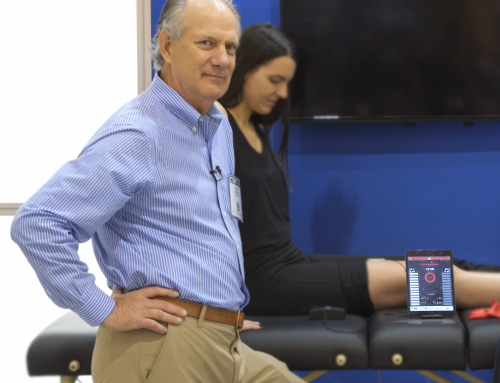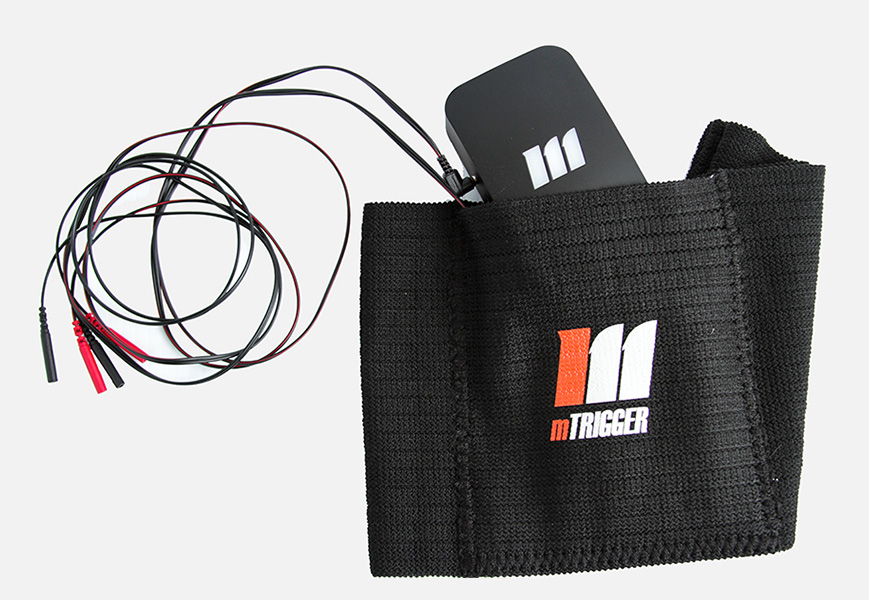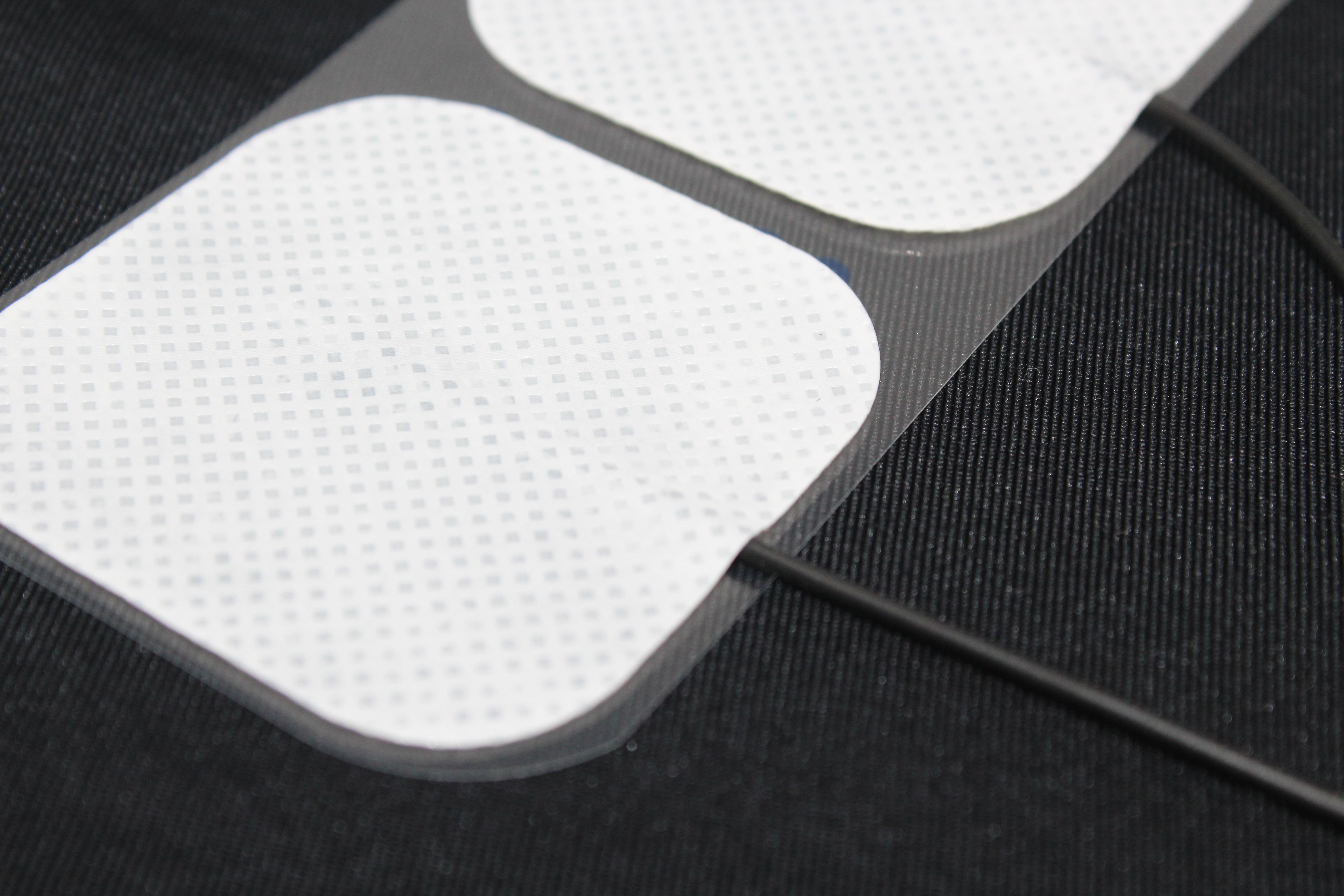If you don’t know where you want to go, you’re never going to get there
What is MVC?
MVC stands for maximum voluntary contraction, and is a measure of muscle strength, where “maximum strength is defined as the highest voluntary force possible under dynamic concentric, dynamic eccentric, or isometric muscle action conditions, and is limited by muscle fiber recruitment and frequency of action potentials.”1
MVC is often measured via maximum voluntary isometric contraction testing (MVICT), accomplished using such tools such as the Quantitative Muscle Assessment (QMA) System (Computer Source, Atlanta, GA).
Maximum contraction can be measured via force (as it is with QMA), or via surface electromyography (sEMG). In the latter case, measurement is referred to as microvolt scaling, wherein the actual electrical activity produced by subcutaneous motor units is measured, as opposed to force exerted.
How does mTrigger utilize MVC?
When we think about MVC, it is important to make the distinction between max voluntary contraction and max voluntary isometric contraction. Data on MVIC normative values are limited2, and research is ongoing to define standardized exercises and methods for maximum muscle activation3.
REAL-TIME ACTIVATION DATA > COMPLICATED, CLINICAL EMG
Due to such limitations, we believe that there is huge value to therapeutic exercise in the accessibility of real-time sEMG data. Additionally, not limiting measurements to disputed MVIC standard exercises allows mTrigger to be applied during functional, customized exercise. While it is important to consider that EMG data can “vary between electrode sites, electrode orientations, participants, and even day of the experiment,”3 the temporal and spatial activation awareness that sEMG biofeedback provides is invaluable to the physical rehabilitation process. It is clear from experience with mTrigger customers that the value of real-time feedback and ease of use strongly outweighs the value of clinical grade, normalized EMG reference data that come at high costs.
How do I set and monitor my MVC in the mTrigger System?
The key with setting your MVC goal in the mTrigger System is a subscription to the concept that sEMG values are subject to change. This concept is two-fold:
- Some elements lie outside our control: Remain flexible in response to the impact of various conditions, including things like humidity and skin conductance as well as muscle fatigue.
- Some elements lie inside our control:
- Load/resistance of exercise – greater effort exerted = greater neuromotor activity produced
- Electrode placement – while not an exact science, try to target muscles appropriately for your exercise(s) and maintain consistency. See our article on electrodes for more.
- Difficulty level – how much do you want to challenge a patient? Increasing the MVC goal over time allows patients to see their progress in a tangible way and motivate themselves to work as hard as possible during their exercises (check out this article on gamification that details the mechanisms and impacts of motivation on performance!)
Keeping these factors in mind, mTrigger offers 2 ways to set your MVC goal:
The first is the MVC Setup protocol located in the Settings module:
- Launch this 30-second protocol to determine the average sustained contraction level for your primary target muscle based on 3 five-second maximum contractions.
- Once measured, make any adjustments to increase or decrease difficulty, set your Channel 2 goal based on the Channel 1 target, or modify as you progress through a series of exercises.
The second method is slightly less precise, but may flow into usage a bit easier:
- Once your mTrigger unit is connected over Bluetooth and channel mode and time settings are saved, set your goal to 1000 μV (microvolts).
- Enter the Train module
- Have patient perform several maximum contractions for whatever exercise you intend to monitor. This does not have to be an isometric contraction unless that is the target exercise!
- Estimate the average level of contraction achieved and slide or type to adjust the goal setting in Train to match that level.
In both scenarios, here are a few reminders:
- The feedback bar is a scale, and the goal sets the top of the scale. Think of changing the goal as zooming in on lower levels of activation or zooming out on higher levels to see activation thresholds more accurately.
- You can always pause a timed session to adjust goal level if the first few reps determine your settings to be too easy or too difficult.
- We want to be flirting with the green “success” zone to encourage a true max contraction every time.
- Your patients WILL fatigue more quickly than you’re used to
A special note for those utilizing mTrigger for relaxation (resting tone/tension) or inhibition (active downregulation during specific movement) training:
Set the MVC threshold as follows:
- For relaxation: Set MVC goal at the level of resting tone and have patient work the feedback bar downwards. This can be a great way to utilize audio feedback as well.
- For inhibition: Typically for inhibition training we see the muscle we intend to activate as the primary target on Channel 1 and Channel 2 acts as our secondary monitoring target, showing compensation, guarding, comparative activation level, etc.
- If you want to see activation relative to primary target activation level: Set MVC at the same goal level as Channel 1
QUICK TIP: turn Match Goals to ON in Settings - If you want to encourage absolute minimum activation: zoom in! Lower the goal to about 500 μV to get a look at any activity spikes during movement.
QUICK TIP: turn Match Goals to OFF in Settings - If MVC levels differ greatly across the two muscles, have patient isolate each muscle and use method 2 to set each goal level individually before getting started
QUICK TIP: turn Match Goals to OFF in Settings*Note: This is a common setup for dual channel, but if a primary target muscle is difficult to access via sEMG (for example, the transverse abdominus), setting up single channel on a compensator you want to downregulate can be incredibly effective at moving activation to the primary target!
- If you want to see activation relative to primary target activation level: Set MVC at the same goal level as Channel 1
Now that you’re armed with that knowledge, get in there and set some goals! If you don’t know where you want to go, you’re never going to get there.
REFERENCES
- Kraemer et al. “Progression models in resistance training for healthy adults: American College of Sports Medicine position stand. Med Sci Sports Exerc 2002; 34: 364–80.
Access online here: doi: 10.1097/00005768-200202000-00027. - Meldrum et al. “Maximum voluntary isometric contraction: Reference values and clinical application.” Pages 47-55 | Received 23 Mar 2006, Accepted 09 Sep 2006, Published online: 10 Jul 2009. Access online here: https://doi.org/10.1080/17482960601012491
- Al-Qaisi. “Electromyography analysis: Comparison of maximum voluntary contraction methods for anterior deltoid and trapezius muscles” Procedia Manufacturing 3 ( 2015 ) 4578 – 4583
Access online here
Let us know what you’d like to see more of on our blog by commenting below or getting in touch.








Leave A Comment